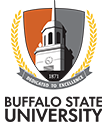The concept of Biological Safety (or biosafety) has paralleled the development of the science of microbiology and its extension into new and related areas (tissue culture, recombinant DNA, animal studies, and biotechnology). The knowledge and skill gained by microbiologists necessary to isolate, manipulate and propagate pathogenic microorganisms required parallel development of containment principles, facility design, and practices and procedures to prevent occupational infections in the biomedical environment or release of the organisms to the environment.
The field of biosafety promotes safe laboratory practices, procedures, and proper use of containment equipment and facilities; stimulates responsible activities among laboratory workers; and provides advice on laboratory design. Biosafety professionals include microbiologists, biologists, molecular biologists, environmental health scientists, industrial hygienists, clinical health care professionals, veterinarians, chemists and engineers. Regardless of their background and education, they must develop knowledge of the principles of epidemiology, disease transmission patterns, risk-assessment management, disinfection and sterilization, disease prevention, aerobiology and environmental control. Ultimately, biosafety is the responsibility of all persons who manipulate pathogenic microorganisms and recombinant DNA molecules.

